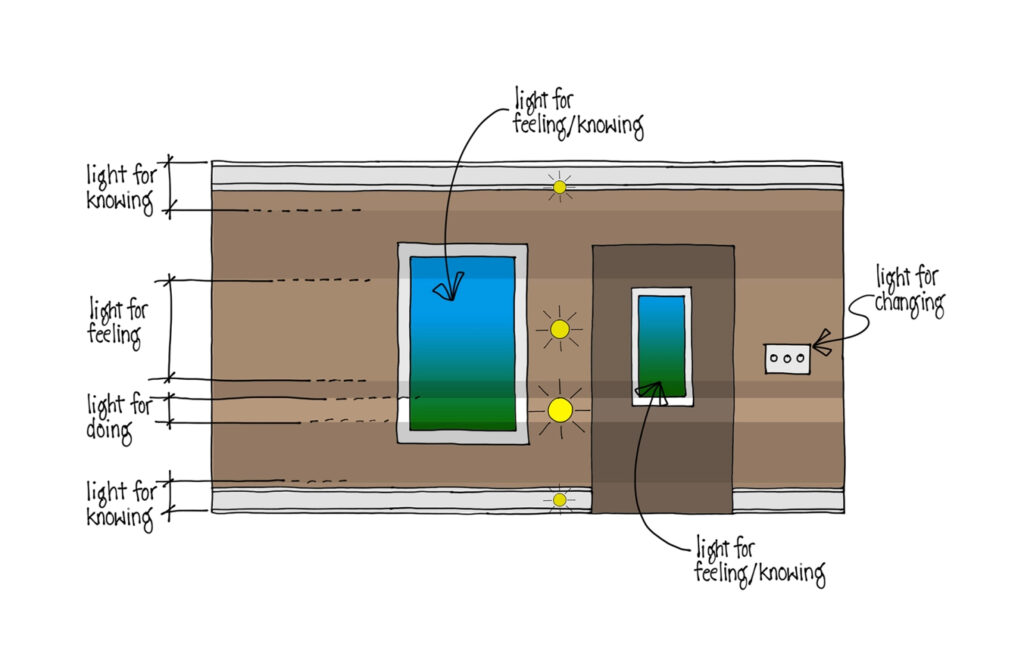Professional lighting designers have a secret language. We use our coded language to streamline our conversations with other insiders, and like a secret handshake that lets us identify other members of our inner circle.
Outside of that circle, the language is utter nonsense.
“I would love to find an LED with a 3000K-1600K variable CCT that works on a forward-phase-cut dimmer to replace the 50MR16 NFL, but it has to be IC rated and have a CRI of 90+.”
We’re trying to force a few of these terms on the rest of the world, like “Color Rendering Index” and “Color Temperature.” You’ve probably seen these when you went to buy your last light bulb. The secret language of lighting design is quite important to a professional, as we deal with each of these acronyms, standards, codes, and measurements on a daily basis. But what about homeowners in search of better lighting? Great lighting cannot be described by metrics any more than a great house can be described by 2×4’s and ceiling heights. We need a new language for light, one that gets to the heart of what we need light to do for us. We need a language that lets us all talk together about what’s important, and allows homeowners to become their own advocates with architects, builders, and electricians.
This new language should be one of hope, not fear. I find that clients seek my services either because they are hoping for better lighting or because they fear bad lighting or because they fear angry building inspectors. Yes, getting the right amount of light on a food preparation surface is important. But good lighting cannot be measured in footcandles any more than a good home could be measured solely by its square footage.
Lighting can only be good when it is for a purpose.
We need light to see what we’re doing. We need light to know where we are, where we are going, and who we are with. We need light for feeling good; relaxed, alert, comfortable. We need light that changes in response to our needs and wellbeing. And we need light that tells our story. Only when each of these are carefully layered together do we have all the benefits of light.

Good lighting cannot be determined just by knowing footcandles, color temperature, or lumens. Good lighting cannot be determined simply by choosing a fixture that looks pretty to us in a showroom. Good lighting is a sum of parts- of light for doing, light for knowing, light for feeling, and light that changes- glued together with light that tells our story. It turns out that we’re hardwired for these particular multiple layers of light.
